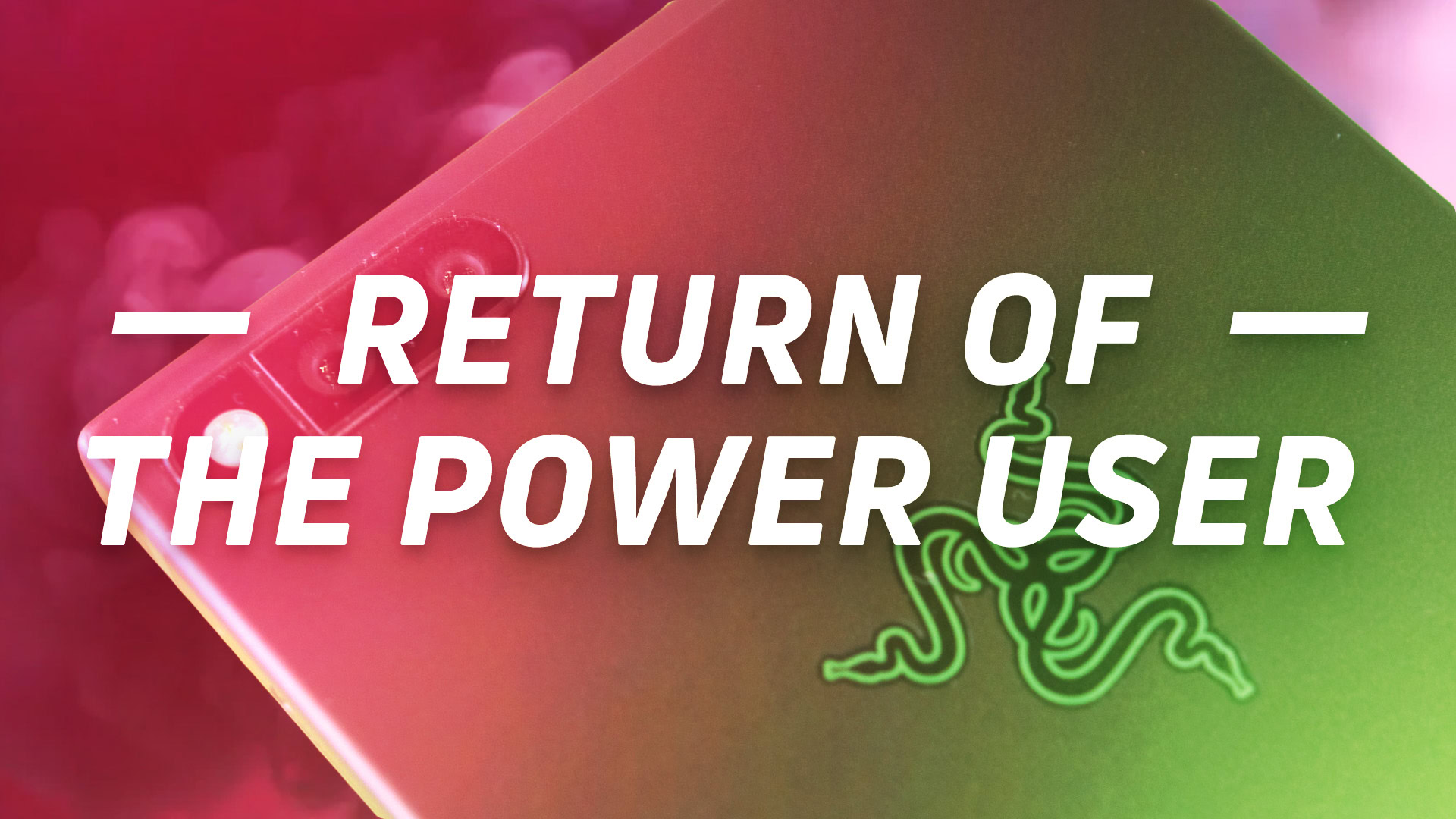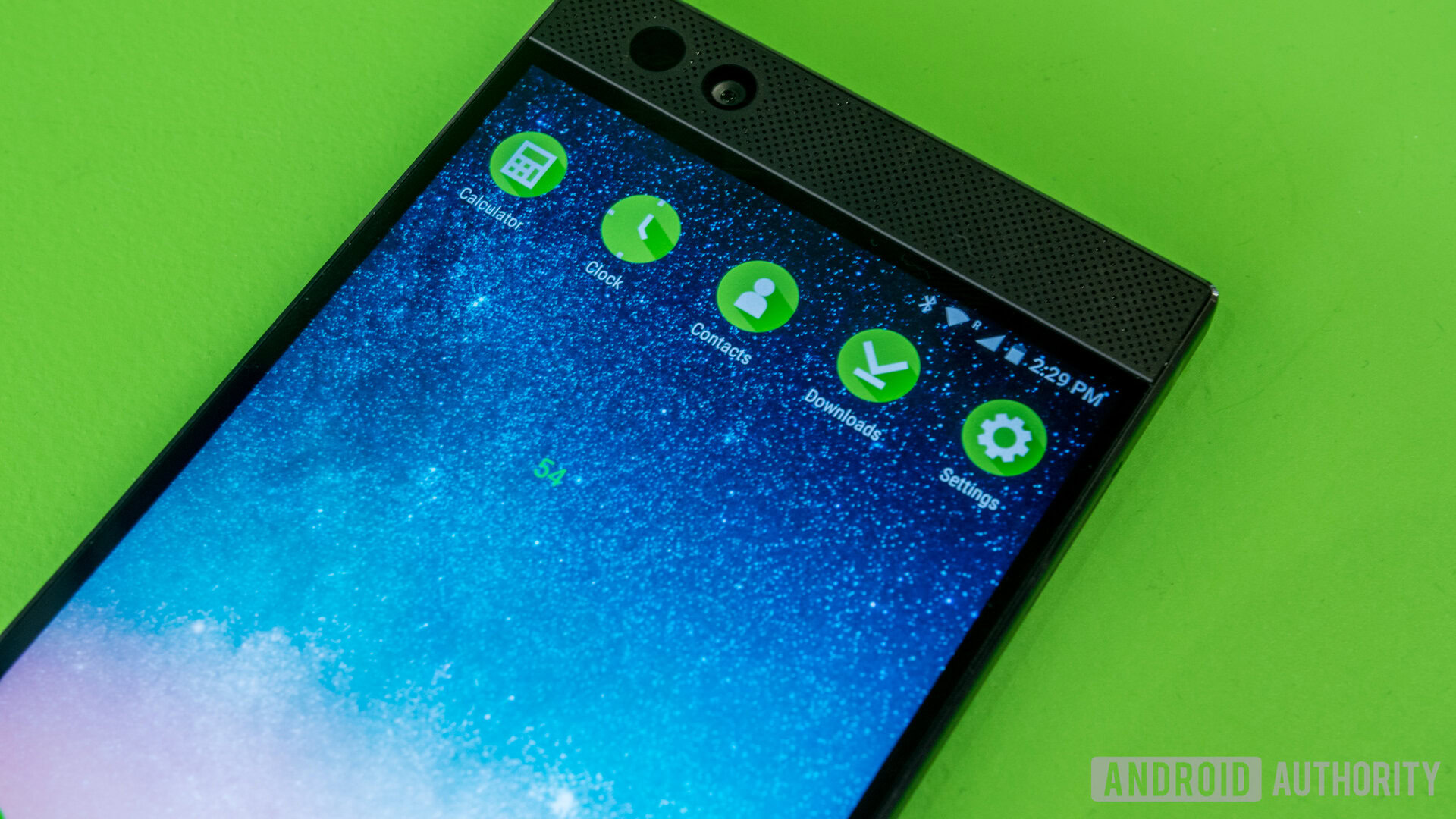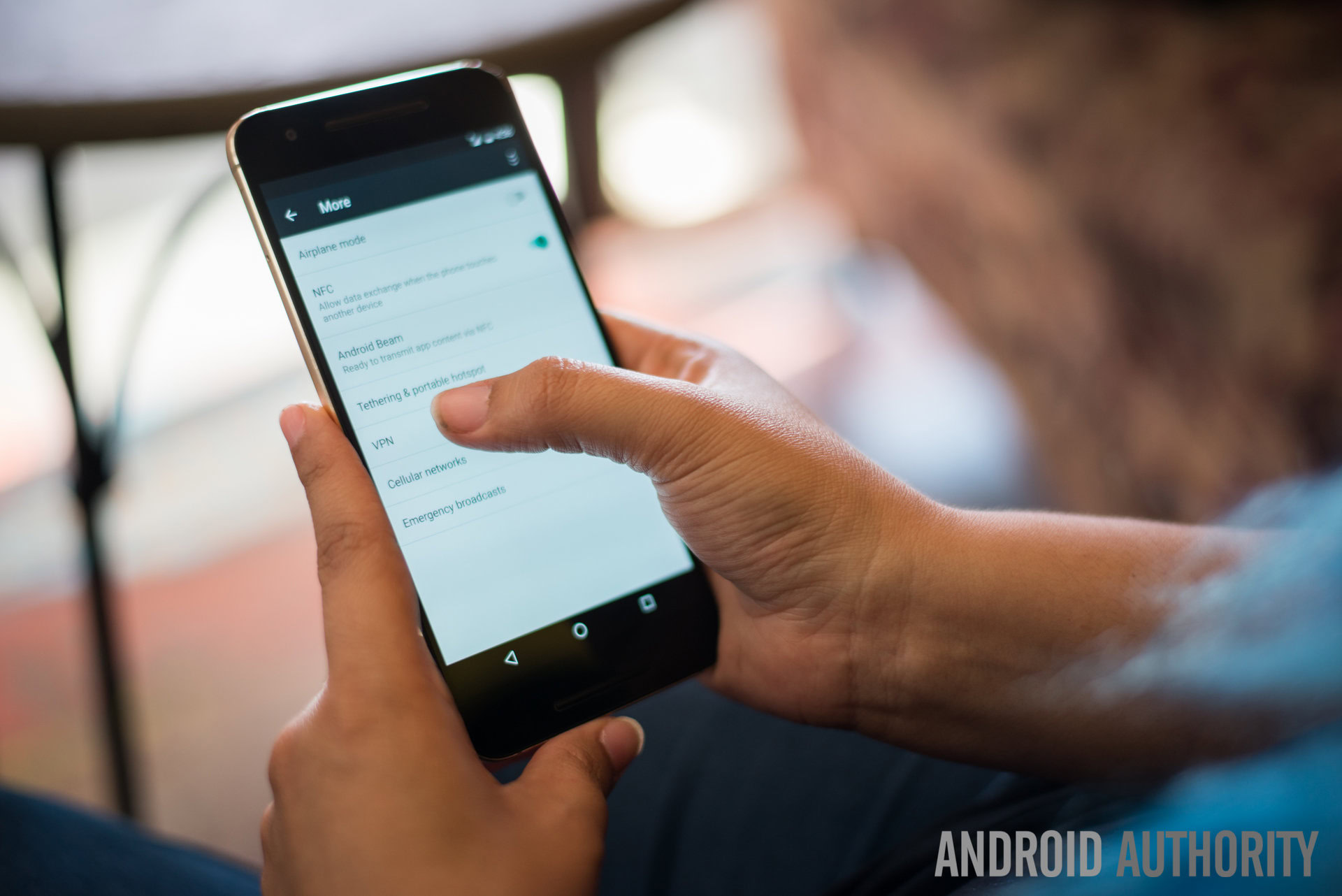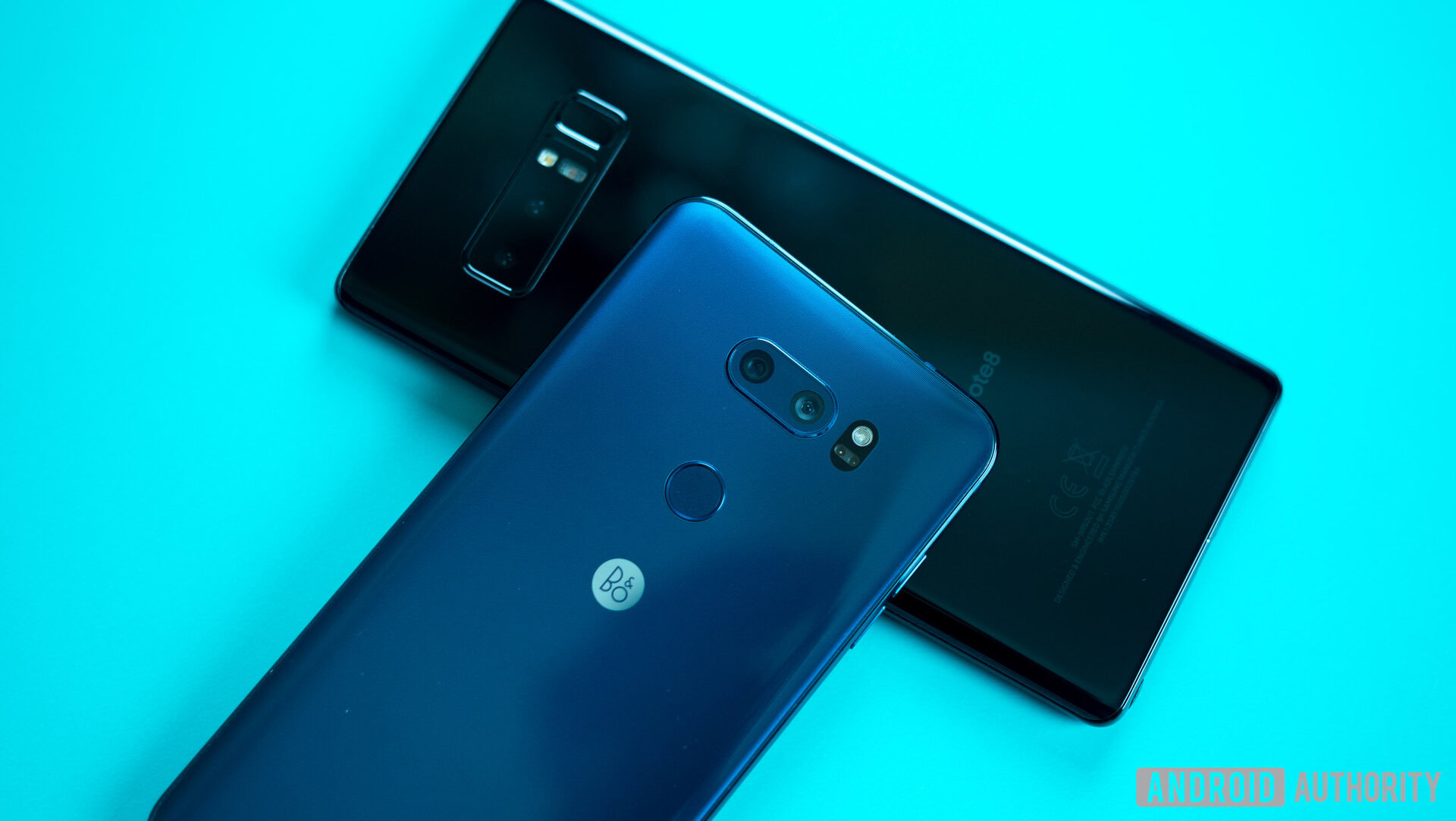Affiliate links on Android Authority may earn us a commission. Learn more.
The return of the Power User
Published onNovember 25, 2017

2017 has been an incredible year in the world of smartphones, with a consistency of releases that has hardly been seen before. Users have a ton of quality options to choose from in the Android space – and there has been a growing trend in powerful, niche devices.
We generally hesitate to call any one phone the absolute best because individual users have different needs, but more than ever we are seeing the high end demand being fulfilled. In this article we’ll be taking a look at five particular devices that are currently fueling the return of a term you may have almost forgotten over the last couple years: the power user.
Stemming from the fact that every user is different, perhaps every power user demands greatness from different aspects of a smartphone. Recently, Rob Triggs posited that the flagship smartphone game is shifting toward niche areas; as we reach consistently great performance no matter what phone users choose, companies have to find a specialty and provide the best experience in that category in order to stand out. That is certainly a theme you will see in this list.
Razer Phone – the beast
What if you just want the absolute best specifications? Surely, the best possible performance lends itself to the best possible experiences across the board? That is exactly what Razer has attempted to do with their recently announced Razer Phone – a phone for gamers, not a gaming phone.

The Razer Phone is certainly one for the spec hungry, sporting the Snapdragon 835, a completely utilised 8 GB of RAM, an SD card slot for more storage, incredible Dolby Atmos front-facing speakers, and a Quad HD screen with Ultra Motion 120Hz refresh rates to make everything fly.
No one can really doubt that this phone will take on mobile gaming better than pretty much anything else out there, but it should also be capable of spectacular media consumption due to its great screen and speakers. Productivity won’t take a backseat to the rest either, as these same specifications will help users get everyday things done in a fast and reliable manner. It’s win-win-win.
It’s easy to look at the Razer Phone as the power user’s dream
It’s easy to look at the Razer Phone as the power user’s dream, packing everything short of the proverbial kitchen sink (except for a headphone jack). We are finalizing our review of the Razer Phone now, so stay tuned for our final thoughts on this beast. But as a latecomer in the 2017 game, it serves as a reminder that we’re not through with this year’s bevy of incredible high end smartphones, and it comes alongside another entrant that is thinking bigger and in a lot of ways, thinking double.
ZTE Axon M – the multitasker
The ZTE Axon M might not have gotten the best review marks here at Android Authority, but we could not deny that the first ever dual screen phone brought a completely unique idea to the table. The Axon M comes with two screens that fold upon themselves for twice the screen real estate and dual screen capabilities that you literally cannot get on any other device so far.
It might be easy to think of this as an Android-powered Nintendo handheld console, but that would only be part of the story. The two screens can work separately or in tandem, providing either a super large canvas or the ability to have a practical spread of applications open all at once.
Adding a complete second screen is one hell of a move to make, and ZTE is banking on users’ desire for a bigger canvas
Users can take elements like text from one side of the phone to the other easily, enhancing productivity; or, for the media lover, one screen could be the perpetual YouTube display for enjoying videos while (trying) to get things done on the other side. Speaking of which, you can even view media in a mirrored ‘tent mode’ which is a first for a smartphone. Adding a complete second screen on a phone is one hell of a move to make, and ZTE is banking on users’ desire for a bigger canvas. We certainly didn’t realize the possibilities it provides until ZTE made it a reality.
It might come as a bit of a surprise that the M doesn’t sport the beastly specifications of our previous device – they would have certainly helped a phone that is trying to pull double time, but this is still the only phone for any users that actually want to ‘dual-monitor’ Android. It may not be perfect now, but we truly hope the idea persists.
BlackBerry KEYone – the executive
The Axon M shows us that power isn’t necessarily the way to please a ‘power user’ – but the BlackBerry KEYone was our early 2017 example of that notion. It sports even lower-end specifications than the Axon M, so you’d be hard-pressed to find someone that prioritizes gaming and media consumption calling the KEYone their best device. However, plenty of those same users still look at BlackBerry’s keyboard-toting smartphone very fondly, pointing at all that they can accomplish with it as a daily driver as the reason why.
Anyone that lives in e-mail land will tell you a physical keyboard gets the job done better than any touchscreen
A productivity-minded user can still be considered a power user, and anyone that lives in e-mail land and does text-based work on the regular will tell you a physical keyboard gets the job done in a much more satisfactory way than any touchscreen can. BlackBerry managed to make the Android experience as enjoyable as possible with a small but capable touchscreen, while marrying the physical keyboard with the screen by providing dozens upon dozens of programmable shortcuts. Work is simply no problem for the KEYone, despite it rocking a mid-range processor in the Snapdragon 625 and “only” 3 GB of RAM.

The KEYone has been given fond accolades from our own editors and reviewers here at Android Authority, proving itself as the daily driver for our very own Andrew Grush, Nirave Gondhia and myself at various stages of the year.
LG V30 – the creator
Which brings us to the last couple of phones, and you might not be too surprised to see what they are. The reason we’re highlighting them, however, is because they arguably fulfill both general ‘power user’ needs: great specs and niche functionality. For the content creator, you basically can’t go wrong with the LG V30.
The V30 is the smartphone for vloggers, video shooters, Instagrammers, and general photographers alike - as well as those that love audio
The wide angle camera for photos and dynamic video, manual video settings for the most camera control in an Android shooter, and even LOG format video recording make the V30 the smartphone for vloggers, video shooters, Instagrammers, and general photographers alike. LG has managed to provide tools for making visual content not only easier to do on a slim, powerful device, but fun to do because of the wide angle secondary lens.
Lanh Nguyen and myself have both used the V30 for extensive periods of time, consistently lauding the wide angle camera as one of the best additions currently on an Android camera. When the big camera needs to sit in the bag or even at home, V30 users are glad to have LG’s latest in their pocket.
And we haven’t even mentioned the high-end specifications, the streamlined Android experience, or the headphone jack that rocks a great sounding Quad DAC – all features that are included in a package that doesn’t get anywhere near the dreaded $1000 price point.
Samsung Galaxy Note 8 – the all-rounder
Samsung might just be the company for which we originally coined the ‘power user’ term, based on its track record for the Galaxy Note line. The Galaxy Note 8 redeems the sins of the Note 7 while hearkening back to what made the line great – mashing the very best possible features and specifications in a phone that also rocks a stylus.

The S Pen is essentially one of a kind in terms of what it brings to the smartphone experience, adding a bevy of features like smart clipping and animated text GIF creation to an already feature-heavy Android iteration. The curved sides of the screen also have the Edge UX, adding panels to the home screens for easy access to information, shortcuts, and more.
The Note 8 also adds a secondary lens to the camera package too – in this case, a zoom lens that lends itself to Samsung’s own version of portrait mode – and Samsung continues their tradition of bringing a good quality shooting experience. And that only scratches the surface of all that Samsung tries to make this phone do.
Putting everything into one phone is what made the Galaxy Note a power user’s phone in the first place
Some might say that the Galaxy slides dangerously into redundancies due to its many applications that mirror Google’s own Android apps – even Bixby sits alongside Google Assistant in the very same device so you can press the dedicated button for one or hold down the home button for the other. But putting quite literally everything into one phone is what made the Note line a ‘power user’s’ phone in the first place, and it has returned to being such this year after a couple of questionable previous attempts.
Wrap up
It’s been a while since we have used the word ‘power user’ – and over time, the very idea of what constitutes one may have subtly evolved. With the myriad of high performing devices in the smartphone space, it is easy to get overwhelmed when trying to make a choice.
Users are no longer just looking for every single specification and feature possible (though it is still possible to find), but those who are in tune with what their needs are can be just as effectively rewarded. Content creators, workaholics, media consumers, and those simply looking for the best of the best have many of their needs met this year, making us proud to say: welcome back power users.